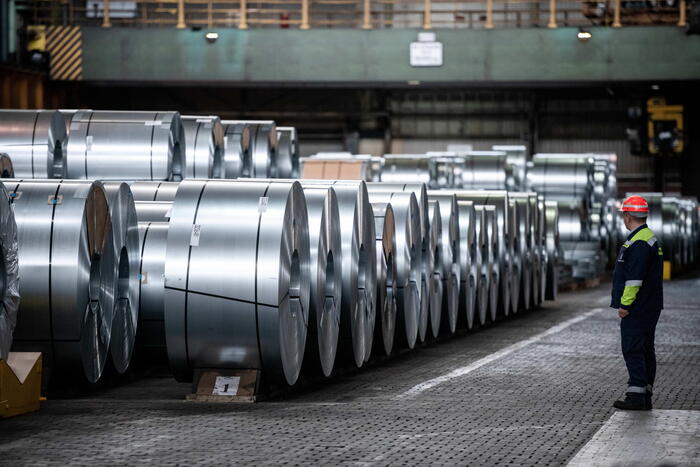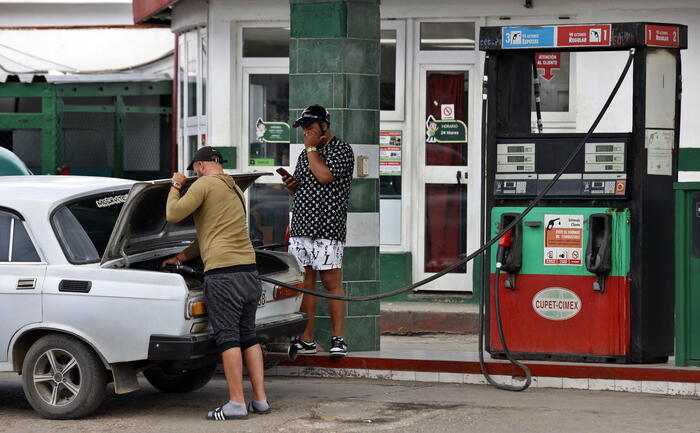Protest in front of Wall Street in late 2021. The banner reads: "The American dream is over." Mario Tama (Getty Images)
Theory says that two consecutive quarters of negative growth in the US economy mean that the country has entered a recession.
After a contraction of 0.4% in the first, or 1.4% on an annualized basis, the weakest quarter since the start of the pandemic, the economy has contracted again between April and June by 0.2% (0.9% annualized rate).
Technically, it could be said that the country has entered a recession, but most economists remember that the Commerce Department report presented this Thursday is only a snapshot, not a conclusive diagnosis that the arbiters of statistics (experts from the National Bureau of Economic Research) will take months to complete, looking at many more criteria than GDP.
The publication of the Trade report, however, is another jug of cold water, especially when this Wednesday the economists of Morgan Stanley, JPMorgan Chase & Co. and Goldman Sachs, among other firms, had increased their estimates for the second quarter after a couple of government reports showed a narrower trade deficit and inventory gains last month.
Most economists still don't believe the economy meets the criteria for the formal definition of a recession, which is based on a broader set of indicators that include measures of income, spending and employment.
But they also believe there is little doubt the recovery is running out of steam amid high inflation and rising interest rates.
Therefore, apart from the preliminary reading of GDP, the debate is open.
Experts are divided on this, with two opposing points of view.
Those who see the recession clearly maintain that the economic sentiment of the population is clearly negative.
In a survey released in mid-June, 56% of Americans believed the economy was slipping into recession.
At the end of June, 52% stated that their economy was doing worse than a year ago, 11 points more than in April.
Doomsayers also
point
to the Fed's four rate hikes so far this year as recession-inducing.
The opposite point of view, defended by the Joe Biden Administration: the diagnosis, which is usually not final until several months later, is based on a wide range of indicators of economic activity, not just quarterly GDP.
Even with two quarters of negative GDP, there would be other indicators that have not started to worsen.
For example, the strength of the labor market.
Every time the US entered a recession since the end of World War II, the unemployment rate was rising just before or around the time the recession was confirmed.
This is not the case in the first half of 2022, with a vigorous labor market, close to full employment, and an unemployment rate that has fallen from 3.9% to 3.6%.
For this reason, some experts point out, for those who prefer to consider the negative data -supply problems, unleashed inflation, real wages lagging behind prices-, the differences with previous recessions suggest that the term may not be a good way of describe what happens.
The Joe Biden administration argues that the use of the term recession is a technical distinction that misses the big picture: the US created more than a million jobs in the second quarter.
The price of oil has fallen significantly since last month (although it was up on Monday and Tuesday).
On Wall Street, analysts were already predicting the next boost from the Federal Reserve, which on Wednesday announced another 75 basis point hike to fight inflation.
Morgan Stanley notes that it's too early to expect the central bank to stop tightening, suggesting equities need to fall further.
JPMorgan, meanwhile, sees bets that inflation has peaked as predicting a Fed turnaround and a better outlook for equities in the second half of the year.

/cloudfront-eu-central-1.images.arcpublishing.com/prisa/HGD5PD3RKRB7XLFDBRMA5LAPD4.jpg)











